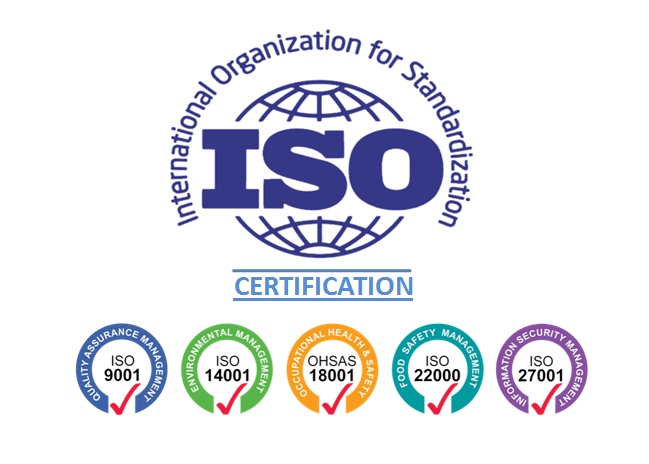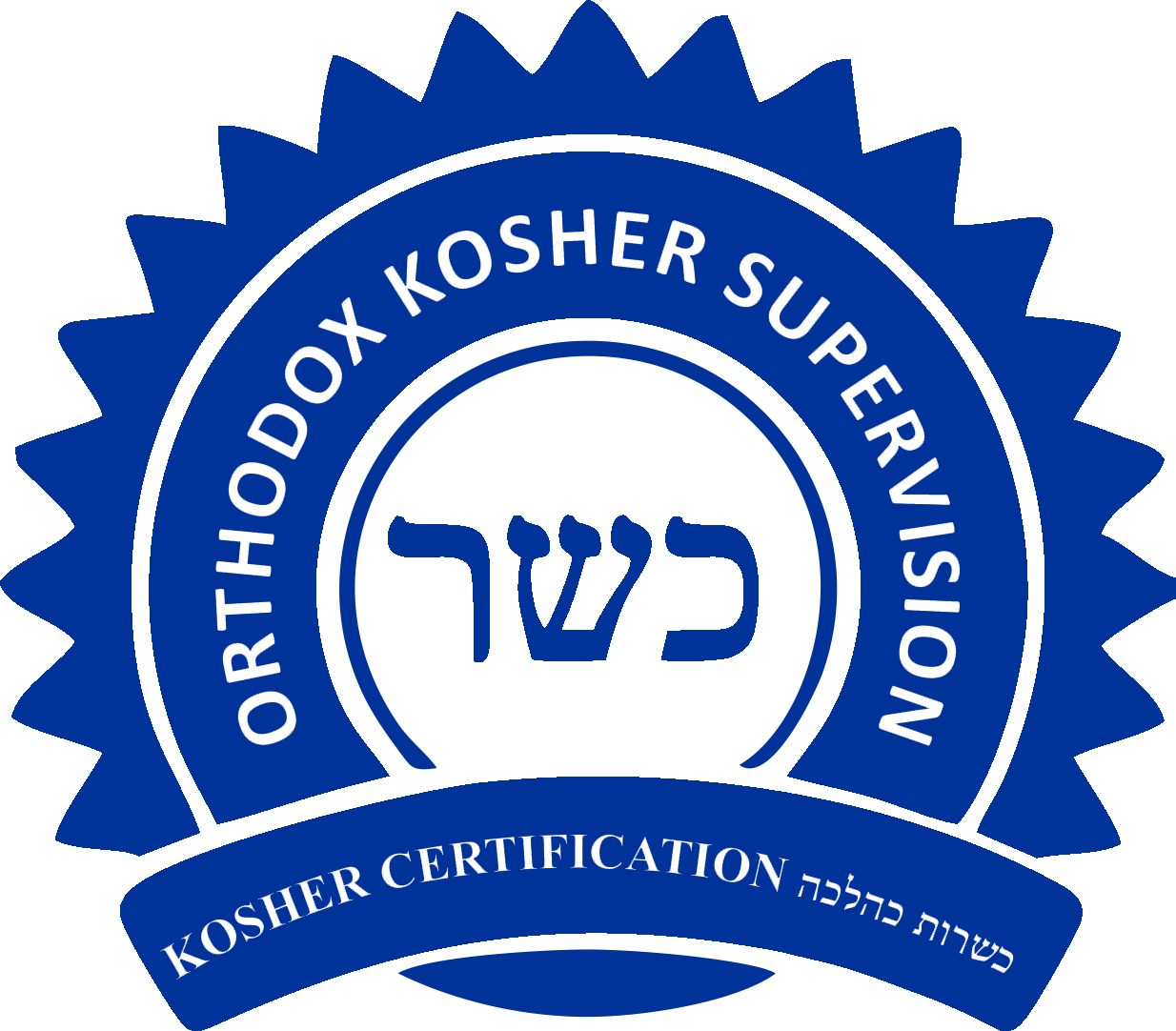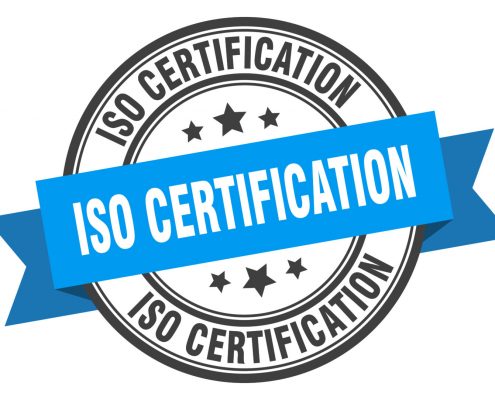ISO stands for International Organization for Standardization. There are many benefits of getting ISO Certification in your organization such as minimizing mistakes, improving reporting and communication, Provides Better Quality products & Services, Each organization wants to retain and establish its market, and maintain its existence, to comply with the tender requirements, to enhance the customer satisfaction, to explore the new boundaries organizations need ISO Certification, somehow it is a customer requirement.

Industries in Delhi: –The key industries in Delhi are Information Technology, Telecommunications, Hotels, Media, Banking, and Tourism. The manufacturing industries of Delhi have also expanded as many consumer goods industries have established manufacturing units and offices in the region.
Different types of ISO Standards are being widely used for Implementation in the organization and ISO Certification in Delhi: –
- QMS( ISO 9001:2015)- Quality Management system
- EMS(ISO 14001:2015) – Environmental Management System
- OHSMS(ISO 45001:2018)- Occupational Health & Safety Management system
- ISMS(ISO 27001:2013)- Information Security Management System
- FSMS(ISO 22000:2018)- Food Safety Management System
- ITSMS(ISO 20000:2011)- Information Technology Service Management System
How to implement ISO Standard in the organization for ISO Certification in Delhi
There are a few steps to implement ISO Standard requirements for Certification in the organization. The steps are as follows: (But not Limited)
- GAP ANALYSIS FOR ISO IMPLEMENTATION IN THE ORGANIZATION: – GAP ANALYSIS INVOLVES THE COMPARISON OF ACTUAL PRACTICE IN CURRENT BUSINESS PROCESSES/ACTIVITIES IN THE ORGANIZATION WITH THE REQUIREMENTS OF ISO STANDARD. ONCE THE GAP ANALYSIS IS COMPLETED. IDENTIFY WHAT IS A REQUIREMENT, WHICH IS NOT BEING IMPLEMENTED OR NOT INTO THE PRACTICE OF THE ORGANIZATION. TAKE THE ACTION, PREPARE THE REQUIRED PROCEDURE / FORM FORMATS. PLAN THE TRAINING FOR THE TEAM WHO ARE INVOLVED IN ORGANIZATION ACTIVITIES. ONCE TRAINING IS COMPLETED. GET THE TEAM INVOLVED IN THE PREPARATION OF REQUIRED PROCEDURES / WORK INSTRUCTIONS/ FORM FORMATS. ONCE DEVELOPMENT IS COMPLETED – IMPLEMENT THE SAME AND MONITOR THE EFFECTIVENESS.
- ESTABLISH YOUR TEAM:- MAKE A TEAM ASSIGN ROLES & RESPONSIBILITIES TO TEAM MEMBERS FOR THEIR RESPECTIVE DEPARTMENTS. LIST ALL PROCESSES WITHIN YOUR ORGANIZATION. IDENTIFY HOW EACH PROCESS INTERACTS WITH THE OTHER.
- POLICY:- PREPARE POLICIES WITH TOP MANAGEMENT COMMITMENTS -MEETING REQUIREMENTS, CONTINUOUS IMPROVEMENT, THE EFFECTIVENESS OF THE SYSTEM, DISPLAY POLICIES IN YOUR ORGANIZATION IN DIFFERENT DEPARTMENTS BY USING SOME METHODS SUCH AS POSTERS, BADGES, COMPANY WEBSITES, ETC.
- DOCUMENTATION:- PREPARE DOCUMENTS IN AN ORGANIZATION SUCH AS QUALITY POLICY MANUAL, PROCEDURES, WORK INSTRUCTIONS/ FORM, RECORDS.
- OBJECTIVES:- PREPARE OBJECTIVES, WHICH ARE IN LINE WITH ORGANIZATIONAL POLICY. THE OBJECTIVES MUST BE CONSISTENT WITH THE QUALITY POLICY, MEASURABLE, TAKE INTO CONSIDERATION THE APPLICABLE REQUIREMENTS, RELEVANT TO THE CONFORMITY OF PRODUCTS AND SERVICES, AND ENHANCEMENT OF CUSTOMER SATISFACTION, MONITORED, COMMUNICATED, UPDATED AS APPROPRIATE.
- TRAINING: – PROVIDE TRAINING TO YOUR TEAM MEMBERS ON DIFFERENT TOPICS SUCH AS POLICIES, MANUALS, PROCESSES, PROCEDURES, WORK INSTRUCTION, CUSTOMER REQUIREMENTS, LEGAL REQUIREMENTS, INTERNAL AND EXTERNAL ISSUES, NEED AND EXPECTATIONS OF THE INTERESTED PARTY, EQUIPMENT. MAINTAIN DOCUMENTS OF TRAINING RECORDS.
- INTERNAL AUDITS: – CONDUCT THE INTERNAL AUDIT AT PLANNED INTERVALS TO VERIFY THE EFFECTIVENESS OF THE IMPLEMENTED MANAGEMENT SYSTEM IN THE ORGANIZATION. DOING INTERNAL AUDIT PLANNING, PREPARING THE INTERNAL AUDIT CHECKLIST FOR EACH PROCESS / ACTIVITY OF THE ORGANIZATION. TEAM FOR INTERNAL AUDIT – TRAIN THE ORGANIZATION’S INTERNAL EMPLOYEES ON THE REQUIREMENTS OF ISO STANDARDS, SO THAT THEY CAN BECOME COMPETENT FOR CONDUCTING INTERNAL AUDITS. ALSO, THEY SHOULD BE ABLE TO ADD VALUE WHILE CONDUCTING THE INTERNAL AUDIT. WHILE CONDUCTING THE INTERNAL AUDIT MAKE SURE THE INTERNAL AUDIT SHOULD NOT AUDIT, THE SAME PROCESS/ ACTIVITIES TO ENSURE THE CONFLICT OF INTEREST. AFTER CONDUCTING THE INTERNAL AUDIT. PREPARE THE INTERNAL AUDIT FINDINGS AND UPDATE TO AUDITEE DEPARTMENTS AND MANAGEMENT REPRESENTATIVES. IF THERE ARE ANY AUDIT FINDINGS LIKE NONCOMPLIANCE AND OPPORTUNITY FOR IMPROVEMENTS. ASK THE AUDITEE DEPARTMENT TO TAKE THE ACTION TO CLOSE THE NC AND TAKE THE ACTION ON OPPORTUNITIES FOR IMPROVEMENTS. THE COMPLETED AUDIT FINDING S, INCLUDING CORRECTIVE ACTION, SHALL BE BROUGHT TO NOTICE TO MANAGEMENT DURING THE MANAGEMENT REVIEW MEETING, FOR THEIR REVIEW AND FEEDBACK. THE PLANNED INTERVAL INTERNAL AUDIT HELPS AN ORGANIZATION ACCOMPLISH ITS OBJECTIVES BY BRINGING A SYSTEMATIC, DISCIPLINED APPROACH TO EVALUATE AND IMPROVE THE EFFECTIVENESS OF RISK MANAGEMENT, CONTROL, AND GOVERNANCE PROCESSES.
- MANAGEMENT REVIEW MEETING: – THE OBJECTIVE OF THE MANAGEMENT REVIEW MEETING IS TO REVIEW AND EVALUATE THE EFFECTIVENESS OF AN ORGANIZATION’S MANAGEMENT SYSTEM, TO DETERMINE ITS CONTINUED SUITABILITY AND ADEQUACY. THE REVIEW SHOULD ASSESS OPPORTUNITIES TO IMPROVE AND THE NEED TO CHANGE THE POLICIES OR THE OBJECTIVES.
ISO 9001:2015 Quality Management System -The requirements of the quality management system when an organization needs to demonstrate its ability to consistently provide products and services that meet customer and applicable statutory and regulatory requirements.
Adopting the Risk-based thinking and Process approach methods to implement in the organization will enhance customer satisfaction by meeting the requirement of products. Enhance the Process performance of the organization – will enhance the overall productivity of the organization.
The Requirement of ISO 9001 – Identify the Internal and External issues of the organization address the needs and expectations of the organization – Do the risk analysis and take the necessary action to significant issues arising within the organization’s activities / Process / Product etc.
Develop the organizational Knowledge, Control the Non-Confirming Products, Continual improvements, etc.
These seven principles of a Quality management system are Customer Focus, Leadership, Engagement of people, process approach, Improvement, Evidence-based decision making, Relationship management, Mutual beneficial supplier relationship.
How to implement ISO 9001:2015 in the organization for ISO Certification in Delhi:- Do Gap Analysis in your organization, Prepare Quality Manual, Prepare Policies and Objectives to achieve them, Do Training in the organization and Maintain Training Record, Prepare Process Flow Chart, Prepare a list of Interested Parties and Their Requirements, monitoring and measuring record of resources, the record of training, Skills and qualification of employees, Internal audit, management review meeting.
ISO 14001:2015 Environmental Management System the requirements for an environmental management system that an organization can use to enhance its environmental performance, the achievement of environmental objectives, by identifying the significant environmental aspects – which creates the pollution. Identify the legal requirements applicable to the organization get compliance and maintain an up-to-date record of Legal requirements.
ISO 14001:2015 defines Compliance obligations as legal requirements that an organization has to comply with any other requirements that an organization has to or chooses to comply with. Compliance obligations can arise from mandatory requirements such as applicable laws and regulations, contractual relationships, codes of practice and agreements, organizational and industry standards.
The organization should determine and have access to the compliance obligations related to its environmental aspects. The organization must also determine how these compliance obligations apply to the organization. The organization must take these compliance obligations into account when establishing, implementing, maintaining, and continually improving its environmental management system. The organization must maintain documented information about its compliance obligations. Compliance obligations can result in risks and opportunities for the organization., Maintain Legal Register.
How to Implement the ISO 14001- Environmental Management System in the organization for ISO Certification in Delhi.
Do the Gap Analysis, Identify the Internal and External issues related to Environmental management, Address the need and Expectations of the Interested Party, including regulatory requirements.
Establish the Environmental Management Policy with top management commitments for the prevention of pollution. Set the Environmental objectives and monitor the same to ensure the environmental policy is being effectively implemented and understood by everyone in the organization. Identify the potential Emergency Situations and prepare the preparedness. Identify all possible environmental aspects in the organization within the process, product, and activities of the organization and analysis the environmental impact, and take the necessary control/ actions on significant Environmental aspects. Monitor the controls. Consider the End of Life of Product, by selecting the product / Raw material considering the life -Cycle perceptive and maintaining the Ecological balance. Conduct the Internal Audit and Management review meeting.
ISO 45001:2018 – Occupational Health Safety Management System. The purpose of ISO 45001 standard is that – when any organization adopts ISO 45001 for implementation in the organization will be able to provide safe and healthy workplaces, prevents work-related injuries and ill health, and continually improve its OH& S performance. The most critically important for the organization is to eliminate OHS hazards and minimize OH& S risks by taking effective preventive and protective action.
How to implement ISO 45001:2018 in the organization for ISO Certification:- OH&S Scope as documented Information, OH&S risks, and opportunities and actions for addressing them, Legal and other requirements, Evidence of competence, Evidence of communications, Plans for responding to potential emergencies, Results on monitoring, measurements, analysis, and performance evaluation, Maintenance, calibration or verification of monitoring equipment, Compliance evaluation results, Internal audit program, Internal audit report, Results of management review, Nature of incidents or nonconformities and any subsequent action taken, Results of any action and corrective action, including their effectiveness, Evidence of the results of continual improvement, Record of Participation and Consultation of workers, Emergency Preparedness Plan, Plan of handling Incidents
ISO 27001:2013: -Information Security Management System. This standard takes a risk-based approach to information security, requiring organizations to identify threats to their organization and select appropriate controls to tackle them. The three ISMS Objectives are Confidentiality, Integrity, and Availability.
How to get ISO 27001:2013 Certification:- Do Gap Analysis, Establish Context Scope and Objectives, Establish Management Framework, Conduct a Risk Assessment, Implement Control to mitigate risks, conduct training, Conduct training on Information Security management system, do Internal Audit, management review meeting, Implement risk treatment plan, measure, monitor and review.
Documents Required for ISMS Implementation: – Scope of Information Security Management System, Structures, hierarchy and interrelationships, ISMS related tools, methods, techniques and their application, information security risk assessment and risk management, processes applicable to ISMS, legal and regulatory requirements relevant to information security.
Benefits of ISMS Certification
: – Retaining customers and winning new business, Preventing fines and loss of reputation, improving processes and strategies, Compliance with commercial, contractual, and legal responsibilities. Assessed the risks and mitigated the impact of a breach, been independently assessed to an international standard based on industry best practices.
ISO 22000:2018
The food supply chain contains the following stages: – Farming and agriculture, Processing, Logistics, Storage, Retail, and food services. food hazards can occur at any stage of the food chain. This standard helps the organization to control food safety hazards, Conformance to legal and regulatory requirements, Increases credibility and reputation, Improves customer satisfaction, organization profitability increases.
Advantages of getting ISO 22000:2018 Certification: – Compliance with customer requirements specifying certification, Independent check of Conformity, Worldwide Recognition, Improves Organization Image. the ISO 2200:2018 approach is based on the PDCA model, Improves Internal and External Communication,
OSS Certification Services Private Limited is Situated in Delhi and provides management system certification in ISO 9001:2015, ISO 14001:2015, ISO 22000:2018, ISO 27001:2013, ISO 45001:2018, ISO 20000:2011. Internal Auditor Training, Lead Auditor Training, Awareness Training, Third Party Inspection in Different areas Such as Food Safety, Telecom, Mechanical, etc., Hygiene Rating.
Benefits of hygiene rating in Restaurants & Hotels in Delhi:-
OSS is one of the leading companies in Delhi which is licensed by FSSAI to conduct Hygiene Rating all over India.
It is a mandatory requirement of FSSAI for all restaurants and hotels to display hygiene ratings on their doors. The food regulator is set to make such ratings mandatory for all restaurants along with the presence of a food supervisor to monitor compliance with food regulation and ensure the safety of food served.
There are a few steps while handling food items in the kitchen:- Always wash your hands while preparing the foods, use aprons gloves, and masks, Clean the food items properly, store the food in good condition, always do pest controls in your restaurant or hotel.
There will also be food supervisors to check the safety of what is served as we know hygiene is important in restaurants A food business’s hygiene rating is determined by local authority food safety officers, who will periodically visit food premises to inspect the following:
- HOW HYGIENICALLY THE FOOD IS HANDLED – HOW IT IS PREPARED, COOKED, COOLED, RE-HEATED, AND STORED
- THE CONDITION OF THE BUILDINGS – THE CLEANLINESS, LAYOUT, LIGHTING, VENTILATION AND OTHER FACILITIES
The hygiene rating system allows customers to make an informed choice on where they eat, based on the ratings. As long as a business complies with all existing food hygiene legislation and follows good practice, it should be easy for them to reach a 5* rating of their restaurant or hotel.
Third-Party Inspection Agency in the Delhi
We are Providing Third Party Inspection services in Delhi
In-process Inspection,
Pre-shipment Inspection
Final Inspection


